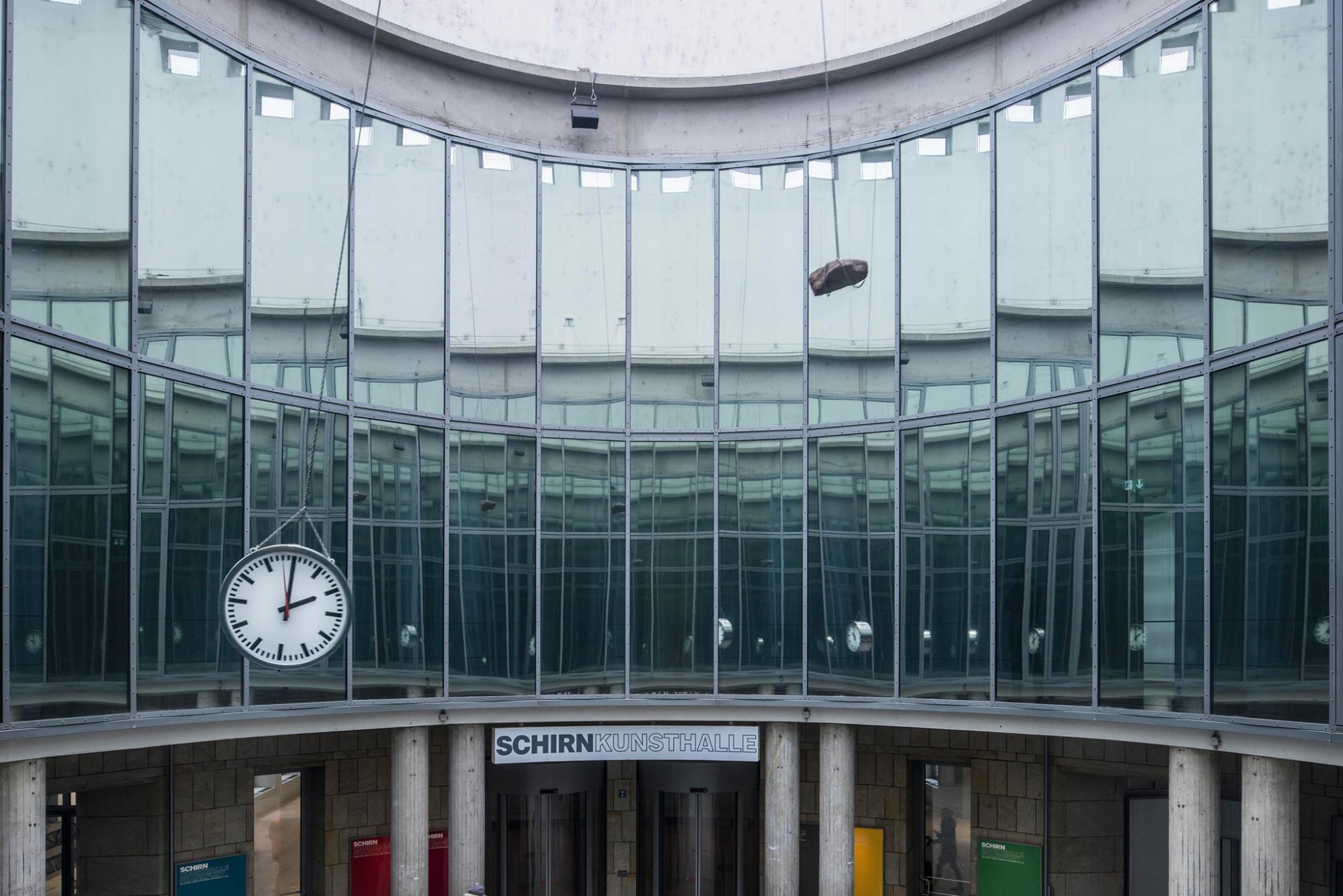




The Schirn Kunsthalle Frankfurt presents the Berlin artist Alicja Kwade’s installation “Die bewegte Leere des Moments” (The Void of the Moment in Motion) specifically developed for its Rotunda from March 26 until June 14, 2015. The work leaves leeway for subjective perception and association. The threat it radiates makes itself almost physically felt. Or is it rather a feeling of uncertainty, of irritation that creeps up on the viewer? A motor with a circular thread is mounted in the center of the ceiling of the publicly accessible Rotunda. The stone with a diameter of about thirty centimeters hanging on a chain reaches to the upper, second story. A large, two-sided analogue clock with a diameter of about fifty centimeters has been mounted across from it at the height of the lower, first story. Both objects rotate around the central axis of the cylinder-shaped space and are incessantly reflected in the building's fenestrated façade covered with mirror backing foil.
“Frequently reminiscent of phenomena in the field of natural science, Alicja Kwade's objects question our perception of things and call for permanent reevaluation. After including some of her works in the group show Infinite Jest in 2014, the Schirn is pleased to offer the artist its central Rotunda for a solo presentation,” says Max Hollein, Director of the Schirn Kunsthalle Frankfurt.
Matthias Ulrich, curator of the exhibition, adds that “the artist raises doubts. Her works stretch an aspect of reality up to a point where it threatens to tilt or actually does so, generating something impossible, something that has not existed before. Objects which seem to be of value, yet only reflect the appearance of something valuable, turn into optical traps for the viewer's perception and raise questions after social agreements and constructions.”
The objects following their infinite paths at unchanging speed produce a variety of sensory stimuli. You hear the monotonous ticking of the clock, and the continuing movement causes a constant hissing sound. The reflection brings forth an endless multiplication and doubling, which deprives the Rotunda of its spatial boundaries and creates a limitless number of parallel universes. Being at the mercy of this all-embracing circular movement, man is, as it were, entirely integrated into a specific cosmos. With her installation “Die bewegte Leere des Moments” (The Void of the Moment in Motion), Alicja Kwade opens up a space of its own for the visitor, a space that offers possibilities for new perspectives and considerations, increases the viewer's powers of concentration, and sharpens all his senses. What do I actually see? What do time, motion, and space mean for the individual? To what extent do scientific findings provide orientation and support in this specific constellation?
What is reality? What is perception? What is social consent? These are the key issues the works of the Berlin-based artist Alicja Kwade are concerned with. In exploring these issues, the artist keeps returning to scientific, philosophical and even economical phenomena such as doubling, deformation, time, or gravitation. And she finds graphic solutions and precise pictures for these subjects in her installations, sculptures, video works, and photographs. Many of her works strike us as experimental arrangements which, however, cast doubt on, and break up, the absoluteness of scientific laws and collective values and their understanding. Abstract things become concrete. Kwade also adds a social component to these arrangements by making power strategies her theme, for example. Relationships are reviewed, familiar things are reassessed, normality is redefined.